#owen nagel
Text




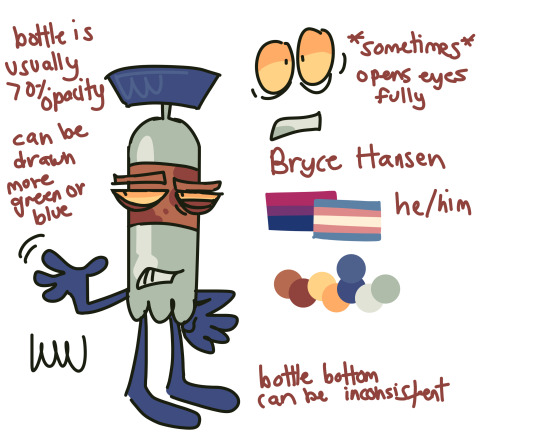
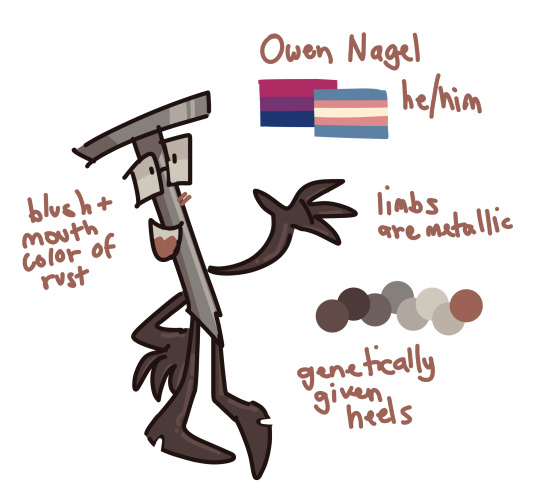
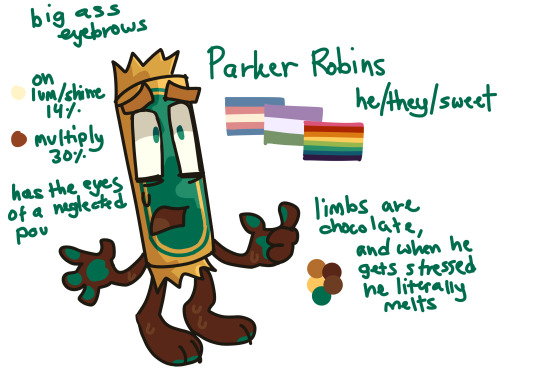

SO MANY of my hfjone design references check it out
#hfjone#backpack hfjone#liam plecak#liam hfjone#parker robins#owen hfjone#owen nagel#airy hfjone#parker hfjone#garrett hfjone#bryce hfjone#amelia hfjone#amelia euler#moldy hfjone#charlotte hfjone#airy#one airy#airy one#bryce one#one bryce#osc#osc art#onehfj#one object show#object shows#my art#owen one#one owen#one liam#one backpack
338 notes
·
View notes
Text
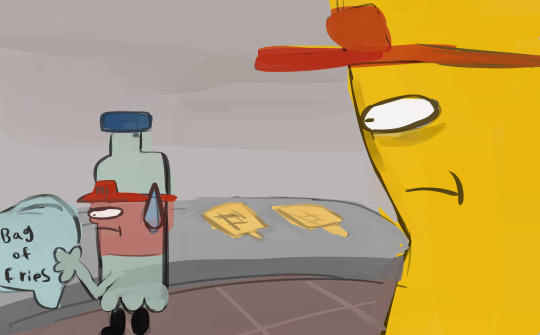
that one frame
#hfjone#backpack hfjone#liam plecak#liam hfjone#parker robins#owen nagel#parker hfjone#garrett hfjone#bryce hfjone#amelia euler#moldy hfjone#charlotte hfjone#airy#one airy#bryce one#one bryce#osc#osc art#onehfj#one object show#object shows#my art#owen one#kylie#art#milkart#fanart#object show community
173 notes
·
View notes
Text

rick owens fall 2024 by kristina nagel
22 notes
·
View notes
Photo
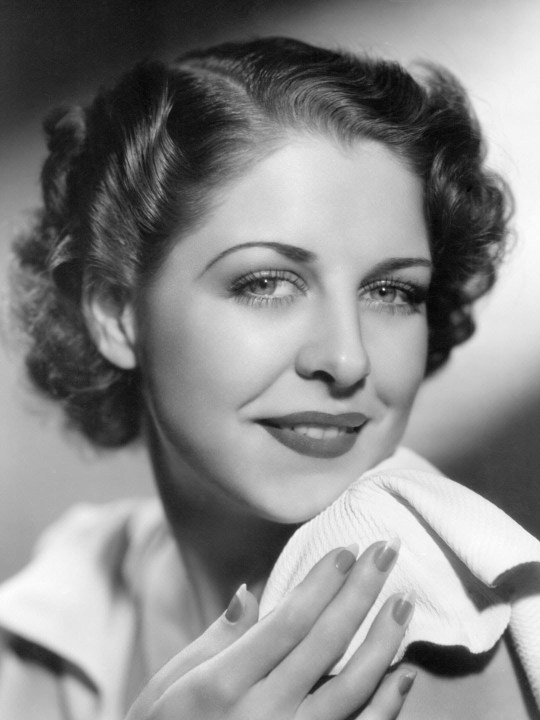
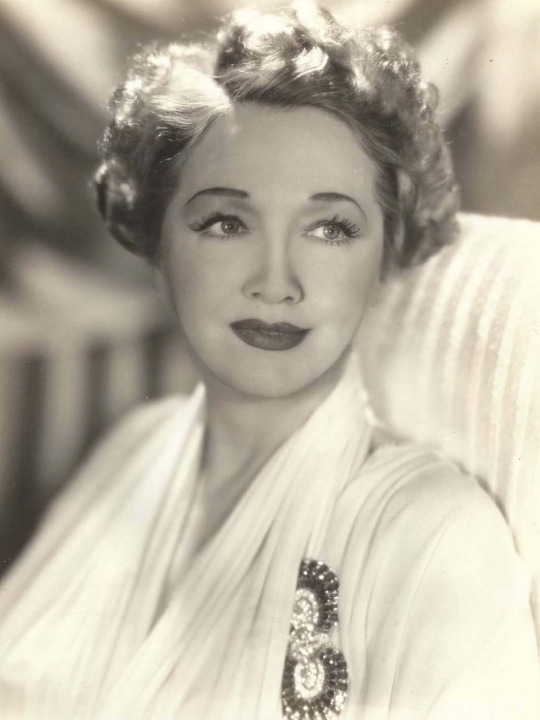
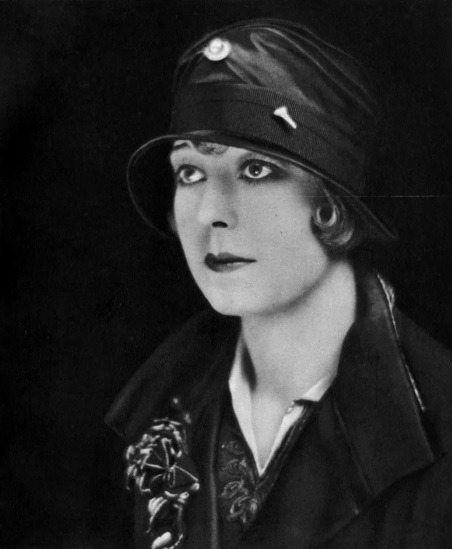




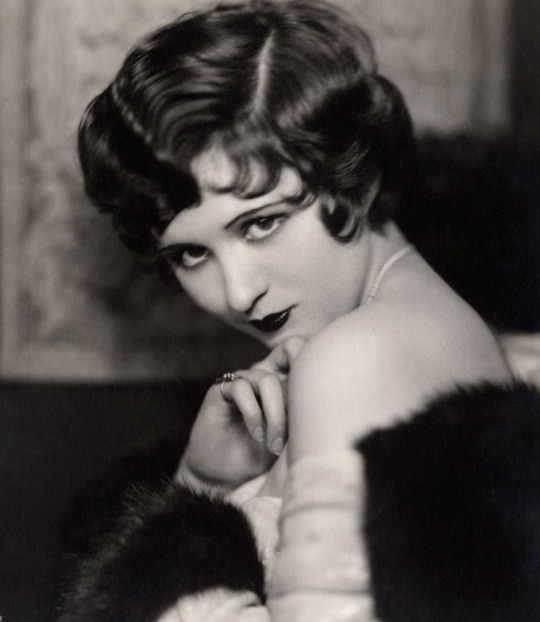


ACTRESSES WHO DIED 1966
Anne Nagel at 50 from liver cancer
Hedda Hopper at 80 from pneumonia
Seena Owen at 71 from illness
Carmelita Geraghty at 65 from heart attack
Ethel Clayton at 82 from heart attack
Vera Steadman at 65 from unknown events
Natacha Rambova at 69 from heart attack
Helen Kane at 62 from cancer
Renate Ewert at 33 from alcoholism
Sophie Tucker at 79 from cancer
#anne nagel#hedda hopper#seena owen#carmelita geraghty#ethel clayton#vera steadman#natacha rambova#helen kane#renate ewert#sophie tucker#thedabara
21 notes
·
View notes
Text

Ryan Shane Owen - Patrick Nagel insp. face paint (2017?)
#ryan shane owen#body paint#face paint#halloween costume#costume#cosplay#patrick nagel#80's art#80's aesthetic#pop art#modern art#men in art#kitsch#male model#makeup#male makeup#Spotify
7 notes
·
View notes
Text

The blueprint and the artist behind this aesthetic that artists such as Kristina Nagel have only recently been doing 😌👆🏿👆🏿👆🏿
#Phoebe#rooftopdarling#winter corry breia#kristina Nagel#Rick owens#michele lamy#fashion#art#cremaster#david lynch#Margiela#ye#yeezy#balenciaga#maison
0 notes
Text
GEORGE WASHINGTON
•Washington: A Life by Ron Chernow (BOOK | KINDLE | AUDIO)
•His Excellency: George Washington by Joseph J. Ellis (BOOK | KINDLE | AUDIO)
•George Washington: A Life by Willard Sterne Randall (BOOK)
JOHN ADAMS
•John Adams by David McCullough (BOOK | KINDLE | AUDIO)
•Passionate Sage: The Character and Legacy of John Adams by Joseph J. Ellis (BOOK | KINDLE | AUDIO)
•John Adams: Party of One by James Grant (BOOK)
THOMAS JEFFERSON
•Thomas Jefferson: The Art of Power by Jon Meacham (BOOK | KINDLE | AUDIO)
•American Sphinx: The Character of Thomas Jefferson by Joseph J. Ellis (BOOK | KINDLE | AUDIO)
•Thomas Jefferson: An Intimate History by Fawn Brodie (BOOK)
JAMES MADISON
•The Three Lives of James Madison: Genius, Partisan, President by Noah Feldman (BOOK | KINDLE | AUDIO)
•James Madison: A Life Reconsidered by Lynne Cheney (BOOK | KINDLE | AUDIO)
•James Madison: A Biography by Ralph Ketcham (BOOK | AUDIO)
JAMES MONROE
•James Monroe: A Life by Tim McGrath (BOOK | KINDLE | AUDIO)
•The Last Founding Father: James Monroe and a Nation's Call to Greatness by Harlow Giles Unger (BOOK | KINDLE | AUDIO)
•James Monroe: The Quest for National Identity by Harry Ammon (BOOK)
JOHN QUINCY ADAMS
•John Quincy Adams: American Visionary by Fred Kaplan (BOOK | KINDLE | AUDIO)
•John Quincy Adams: A Public Life, A Private Life by Paul C. Nagel (BOOK | KINDLE | AUDIO)
•The Lost Founding Father: John Quincy Adams and the Transformation of American Politics by William J. Cooper (BOOK | KINDLE | AUDIO)
•The Remarkable Education of John Quincy Adams by Phyllis Lee Levin (BOOK | KINDLE)
ANDREW JACKSON
•American Lion: Andrew Jackson in the White House by Jon Meacham (BOOK | KINDLE | AUDIO)
•Andrew Jackson: His Life and Times by H.W. Brands (BOOK | KINDLE | AUDIO)
•Andrew Jackson, Volume I: The Course of American Empire, 1767-1821 by Robert V. Remini (BOOK)
•Andrew Jackson, Volume II: The Course of American Freedom, 1822-1832 by Robert V. Remini (BOOK | KINDLE)
•Andrew Jackson, Volume III: The Course of American Democracy, 1833-1845 by Robert V. Remini (BOOK)
MARTIN VAN BUREN
•Martin Van Buren and the American Political System by Donald B. Cole (BOOK | KINDLE)
•Martin Van Buren and the Emergence of American Popular Politics by Joel H. Silbey (BOOK)
•Martin Van Buren: The Romantic Age of American Politics by John Niven (BOOK)
WILLIAM HENRY HARRISON
•A Child of the Revolution: William Henry Harrison and His World, 1773-1798 by Hendrik Booraem V (BOOK | KINDLE)
•Mr. Jefferson's Hammer: William Henry Harrison and the Origins of American Indian Policy by Robert M. Owens (BOOK | KINDLE | AUDIO)
•The Carnival Campaign: How the Rollicking 1840 Campaign of "Tippecanoe and Tyler Too" Changed Presidential Elections Forever by Ronald G. Shafer (BOOK | KINDLE | AUDIO)
#Books#Books About Presidents#Presidents#Presidency#Book Suggestions#Book Recommendations#George Washington#President Washington#General Washington#Washington Administration#John Adams#President Adams#Adams Administration#Thomas Jefferson#President Jefferson#Jefferson Administration#James Madison#President Madison#Madison Administration#James Monroe#Monroe Administration#President Monroe#John Quincy Adams#JQA#President J.Q. Adams#J.Q. Adams Administration#Andrew Jackson#President Jackson#General Jackson#Jackson Administration
68 notes
·
View notes
Text

Rick Owens by Kristina Nagel for Document Journal
265 notes
·
View notes
Text

Rick Owens photo Kristina Nagel, styling Léopold Duchemin.
8 notes
·
View notes
Text
The squad (AKA all my oc’s to this date)

“Why are you on Mar’s shoulders?”
“Why i am supervising all of—”
“Remy?”
“She jumped up there after a flock of birds caught her off guard”
“REMY!”
“I’m gonna ignore Marzell’s missing teeths and Nagel being on fire, Rem why do you—”
“The egg hatched in my arms”
“Why—”
“Bandits had it”
“:D”
“OK I’M DRAGGING YOU’ALL TO OWEN’S!!”
—
There was an oc’s event going on today was the last day, prompt free day
DTS by @riddscorner
Info on these four here :3
Remy — Alary — Deryn and Marzell
Remy here is handling what arson server calls a crock!
#deryn#deryn kikkert#marzell#alary#alary nagel#remy#remington clifton#black clover#my oc’s#black clover fanart#lucadoodling
10 notes
·
View notes
Text
FOREVER AFTER
1918 / 1919
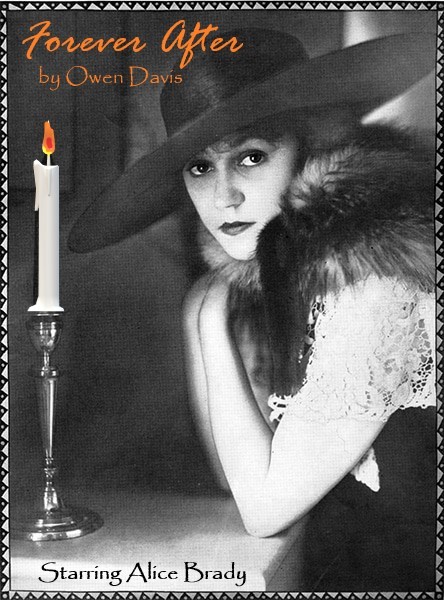
Forever After is a three-act play by Owen Davis. It was originally produced by William A. Brady starring his daughter, Alice Brady and Conrad Nagel.
From the day they first met in the schoolhouse in a small New England town, Theodore Wayne, son of a respected lawyer, and Jennie Clapton, daughter of wealthy parents, have been sweethearts. Their romance has progressed into their college years, where Ted has become a big football star on the gridiron. But Jack Randall, the wealthiest boy in town, has also courted Jennie, with the approval of her mother, impressed and blinded by Jack's money. Ted's father dies, and Ted has to leave college to return home to a menial job in order to support his mother. Jennie's love for him never waivers, but her mother convinces Ted that Jennie's happiness hinges on having money and social position. He leaves town, with his mother, and Jennie is heartbroken. Then World War I breaks out.
Alice Brady was doing double duty during the run, making films during the day, and performing in theatre at night. She was nominated for an Oscar in 1937, and won the Award in 1938. She appeared in the play courtesy of Select Films Corp., to which she was under contract. This was her first stage appearance in more than three years.

During the run of the play, Miss Brady co-starred in a film with her stage co-star Conrad Nagel in Redhead (1919). The film is now considered lost.
Instead of Atlantic City, the play premiered in Long Branch NJ on August 12, 1918 and then Asbury Park NJ before moving south to Washington DC. But that doesn’t mean Miss Brady didn’t ‘visit’ Atlantic City - at least in film.


During the run of Forever After, Brady was also filming The World To Live In (1919) which was partly set in Atlantic City.

Instead of going on location to the seaside resort, Select Films brought Atlantic City to Brady, by painstakingly recreating the lobby of Atlantic City’s iconic Traymore Hotel (above) at a New York studio. Extras who had vacationed at the Traymore were recruited to verify the accuracy of the recreation. In 2010 HBO’s “Boardwalk Empire” also chose to recreate 1920′s Atlantic City in Brooklyn.

The reason for starting tryouts in Monmouth County was that Brady had a home in Allenhurst NJ on Deal Lake, which is on the northern border of Asbury Park and the Atlantic Ocean. During the run of the play, Brady leased the home to his daughter, although she had very little leisure time to enjoy it.

Forever After opened on Broadway at the Central Theatre (1567 Broadway at 47th Street) on September 9, 1918.
About the Venue: From 1921 through 1957, the Central alternated movies and live theatre (including a fair amount of striptease and burlesque). Movies kept it afloat until 1988, when the Shuberts sold it. The theatre lobby became the Roxy Deli and the auditorium became what is now the W Hotel. Forever After was the premiere production of the new 1,100 seat venue.
“The new theatre is attractively decorated in French gray and old rose, with just a bit of dull gold. The audience last night gave every indication of liking the new play immensely, which should be encouraging to the management, as there are a fearfully large number of seats which people could stay away from in the Centra!.” ~ HEYWOOD BRAUN

It was reported that producer Brady spent $40,000 on the scenery, and another $40,000 on sound effects to imitate the sounds of war.

Miss Brady’s salary was revealed to be $750 for her stage week, and a further $1,500/week for her screen work.
"I work in pictures all day. The only rest I ever get is on rainy days, and often I don't get that, because I have to be fitted for new costumes. Ordinarily I get to the studio a little after 9 in the morning and I'm there until 6 in the afternoon. I'm here at the theater about 7:30 and I usually manage to get away about 11:30.“ ~ ALICE BRADY
Miss Brady’s comment about having rainy days off reflects that early filmmaking was done outdoors to capitalize on the sun as a lighting source, instead of lighting interiors in a studio.

On December 23, 1918 it moved to the Playhouse Theatre (137 West 48th Street).
About the Venue: The Playhouse was a theatre built by William Brady in 1911. When he died and it was sold to the Shuberts. From 1949 to 1952, it was an ABC Radio station. Both the interior and exterior were used in Mel Brooks' movie, "The Producers." In 1969, the theatre was razed to build onto Rockefeller Center.



Between the two venues, the play ran 312 performances, closing on June 7, 1919. Miss Brady and the play took the summer off, before touring the play in the fall of 1919.
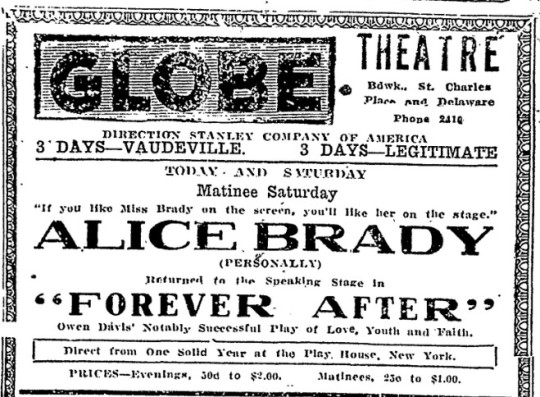
Forever After opened in Atlantic City at the Globe Theatre on September 25, 1919. Alice Brady was billed as appearing “personally” and “returned to the speaking stage” so readers would not think that Forever After was a film.

A film version of the play was made in 1926 starring Mary Astor and Lloyd Hughes. Alice Brady, meanwhile, took a decade-long break from film from 1923 to 1933, concentrating on Broadway instead.

The film opened in Atlantic City at the Stanley Theatre (Boardwalk & Kentucky) on November 3, 1926.
#Alice Brady#Forever After#Mary Astor#1919#1918#Broadway#Broadway Play#Atlantic City#Traymore Hotel#Globe Theatre#Playhouse Theatre#Central Theatre#Asbury Park#Long Branch#Owen Davis#New Jersey#William A. Brady
1 note
·
View note
Text
Consciência

Existimos em uma matriz, simulação , holograma ou realidade virtualmente programada que acreditamos ser real porque nossos cérebros nos dizem que é.
A consciência é tudo e tudo na simulação virtual de nossas experiências trazidas à consciência pelo cérebro - uma máquina eletroquímica sempre visualizando códigos de streaming para experiência e interpretação.
O experimento biogenético humano é a consciência trazida para o físico pelos padrões da geometria sagrada que se repetem em ciclos chamados Tempo. São todos códigos binários - uns e zeros - criando padrões que a matriz do nosso cérebro pode interpretar como reais e com significado.
René Descartes disse: "Cogito, ergo sum" - "Penso, logo existo". Ele estava certo.
A consciência pode envolver pensamentos, sensações, percepções, humores, emoções, sonhos e autoconsciência. É visto de várias maneiras como um tipo de estado mental, uma maneira de perceber ou uma relação entre o eu e o outro. Foi descrito como um ponto de vista, um eu, ou o que Thomas Nagel chamou a existência de "algo que é como" ser algo.
Muitos filósofos viram a consciência como a coisa mais importante do universo. Por outro lado, muitos cientistas viram a palavra como um significado muito nebuloso para ser útil.
A consciência é objeto de muitas pesquisas em filosofia da mente, psicologia, neurociência, ciência cognitiva e inteligência artificial. Questões de interesse prático incluem como a presença de consciência pode ser avaliada em pessoas gravemente doentes ou em coma se a consciência não humana existe e, em caso afirmativo, como pode ser medida; em que ponto da consciência do desenvolvimento fetal começa; e se os computadores podem alcançar estados conscientes.
Na linguagem comum, a consciência às vezes também denota estar acordado e responsivo ao ambiente, em contraste com estar dormindo ou em coma.
Consciência é um termo que se refere à relação entre a mente e o mundo com o qual ela interage. Foi definido como: subjetividade, consciência, a capacidade de experimentar ou sentir, vigília, ter um senso de individualidade e o sistema de controle executivo da mente. Apesar da dificuldade na definição, muitos filósofos acreditam que há uma intuição subjacente amplamente compartilhada sobre o que é a consciência. Como Max Velmans e Susan Schneider escreveram em The Blackwell Companion to Consciousness: "Qualquer coisa que estejamos cientes em um determinado momento faz parte de nossa consciência, tornando a experiência consciente ao mesmo tempo o aspecto mais familiar e misterioso de nossas vidas"
Misterianismo
O mistério é uma posição filosófica que propõe que o difícil problema da consciência não pode ser resolvido pelos humanos. O problema insolúvel é como explicar a existência de qualia (instâncias individuais de experiência subjetiva e consciente). Em termos das várias escolas de filosofia da mente, o misterianismo é uma forma de fisicalismo não redutivo. Alguns "misteriosos" expõem seu caso de forma intransigente. Colin McGinn disse que a consciência é um mistério que a inteligência humana nunca desvendará. Outros acreditam que a consciência não está ao alcance da compreensão humana atual, mas pode ser compreensível para futuros avanços da ciência e da tecnologia.
O físico mais inteligente do mundo acha que a ciência não pode quebrar a consciência. Scientific American - 18 de agosto de 2016
O teórico das cordas Edward Witten diz que a consciência permanecerá um mistério. Alguns pensadores da mente, notadamente o filósofo Colin McGinn , argumentam que a consciência é insolúvel. O filósofo Owen Flanagan chama esses pessimistas de misteriosos, em homenagem ao grupo de rock dos anos 60 Question Mark and the Mysterians. Recentemente, o físico Edward Wittensaiu como um misterioso. Witten é visto com admiração por seus colegas físicos, alguns dos quais o compararam a Einstein e Newton. Ele é o grande responsável pela popularidade da teoria das cordas nas últimas décadas. A teoria das cordas sustenta que todas as forças da natureza derivam de partículas infinitesimais se contorcendo em um hiperespaço que consiste em muitas dimensões extras.
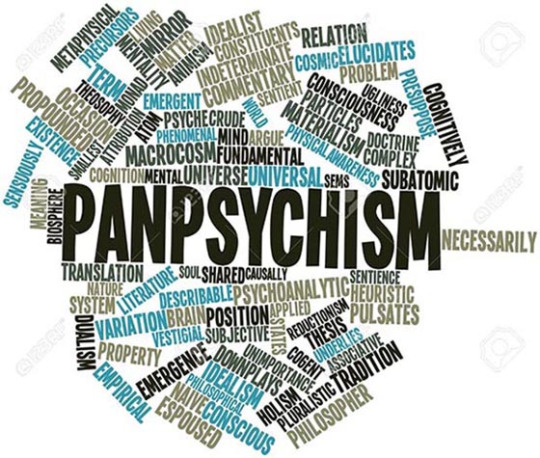
Por que o panpsiquismo provavelmente está errado. The Atlantic - 20 de setembro de 2016
A consciência está em toda parte? É uma característica básica do universo, no coração das menores partículas subatômicas? Tal ideia - o pampsiquismo como é conhecido - pode soar como misticismo da Nova Era, mas alguns filósofos analíticos intransigentes sugeriram que pode ser como as coisas são, e agora é um tema quente na filosofia da mente. A popularidade do panpsiquismo decorre do fato de que ele promete resolver dois problemas profundos simultaneamente.
O primeiro é o famoso problema difícil da consciência. Como o cérebro produz experiência consciente? Como os neurônios disparando podem dar origem a experiências de cor, som, sabor, dor e assim por diante? Em princípio, os cientistas poderiam mapear meus processos cerebrais em detalhes completos, mas, ao que parece, eles nunca poderiam detectar minhas próprias experiências - a aparência das cores, a sensação da dor e assim por diante: as propriedades fenomenais dos estados cerebrais envolvidos. De alguma forma, ao que parece, os processos cerebrais adquirem um aspecto subjetivo, invisível para a ciência. Como podemos explicar isso? O segundo problema diz respeito a uma aparente lacuna em nossa imagem científica do mundo.
Minds Everywhere: 'panpsiquismo' toma conta da ciência. Live Science - 24 de fevereiro de 2016
Os humanos estão vivendo em uma simulação? A consciência nada mais é do que o disparo de neurônios no cérebro? Ou a consciência é uma entidade distinta que permeia cada partícula de matéria no universo? A resposta à pergunta “o que é consciência” pode ter implicações para o futuro da inteligência artificial (IA) e conceitos distantes como upload de mente e imortalidade virtual.
Panpsiquismo é a visão de que a consciência, mente ou alma (psique) é uma característica universal e primordial de todas as coisas. Os panpsiquistas se vêem como mentes em um mundo de mentes.
Nas noticias ...
A consciência é contínua ou discreta? Talvez seja os dois, argumentam os pesquisadores. Medical Express - 3 de setembro de 2020
Duas teorias principais alimentaram um debate de 1.500 anos iniciado por Santo Agostinho: A consciência é contínua, onde estamos conscientes em cada ponto no tempo, ou é discreta, onde estamos conscientes apenas em certos momentos do tempo? Em uma opinião publicada em 3 de setembro na revista Trends in Cognitive Sciences, os psicofísicos respondem a essa questão secular com um novo modelo, que combina momentos contínuos e pontos discretos de tempo.
Como a consciência surge no cérebro? Ciência Viva - 7 de fevereiro de 2019
Os humanos aprenderam a viajar pelo espaço, erradicar doenças e entender a natureza no nível incrivelmente pequeno de partículas fundamentais. No entanto, não temos ideia de como a consciência - nossa capacidade de experimentar e aprender sobre o mundo dessa maneira e relatá-lo aos outros - surge no cérebro. De fato, embora os cientistas tenham se preocupado em entender a consciência por séculos, ela continua sendo uma das mais importantes questões não respondidas da neurociência moderna. Agora, um novo estudo esclarece o mistério ao descobrir redes no cérebro que funcionam quando estamos conscientes. Não é apenas uma questão filosófica. Determinar se um paciente está "consciente" após sofrer uma lesão cerebral grave é um grande desafio tanto para médicos quanto para famílias que precisam tomar decisões sobre os cuidados.
Sensações corporais dão origem a sentimentos conscientes. Medical Express - 29 de agosto de 2018
Os seres humanos experimentam constantemente um fluxo de sentimentos subjetivos em constante mudança que só é interrompido durante o sono e a inconsciência profunda. Pesquisas finlandesas mostram como os sentimentos subjetivos são mapeados em cinco categorias principais: emoções positivas, emoções negativas, funções cognitivas, estados somáticos e doenças. Todos esses sentimentos estavam imbuídos de fortes sensações corporais. Esses resultados mostram que os sentimentos conscientes derivam do feedback corporal. Embora a consciência surja devido à função cerebral e experimentemos nossa consciência como "alojada" no cérebro, o feedback corporal contribui significativamente para uma ampla variedade de sentimentos subjetivos.
O Universo é Consciente? NBC - 16 de junho de 2017
Alguns dos cientistas mais renomados do mundo estão questionando se o universo é uma entidade viva que pode pensar, sentir e se mover à vontade. Durante séculos, a ciência moderna vem diminuindo a distância entre os humanos e o resto do universo, de Isaac Newton mostrando que um conjunto de leis se aplica igualmente a maçãs em queda e luas em órbita a Carl Sagan entoando que 'somos feitos de material estelar' - que os átomos de nossos corpos foram literalmente forjados nas fornalhas nucleares de outras estrelas.
A consciência é apenas uma ilusão? BBC - 4 de abril de 2017
Daniel Dennett sempre acreditou que nossas mentes são máquinas. Para ele, a questão não é computadores podem ser humanos? Mas os humanos são realmente tão inteligentes? A intuição é simplesmente saber algo sem saber como você chegou lá. Nossas mentes são feitas de máquinas moleculares, também conhecidas como células cerebrais. Nossas mentes são feitas de máquinas moleculares, também conhecidas como células cerebrais.
Neurobiólogos programam uma rede neural para analisar a fiação do cérebro. Medical Express - 28 de fevereiro de 2017
Como surge a consciência? Os pesquisadores suspeitam que a resposta a essa pergunta esteja nas conexões entre os neurônios. Infelizmente, no entanto, pouco se sabe sobre a fiação do cérebro. Isso se deve também a um problema de tempo: rastrear conexões em dados coletados exigiria horas-homem equivalentes a muitas vidas, já que nenhum computador foi capaz de identificar os contatos das células neurais de maneira confiável até agora. Os cientistas planejam mudar isso com a ajuda da inteligência artificial. Eles treinaram várias redes neurais artificiais e, assim, permitiram a reconstrução amplamente acelerada de circuitos neurais.
O que é Consciência? Físicos procuram respostas. Live Science - 13 de dezembro de 2016
O renomado físico Edward Witten sugeriu recentemente que a consciência pode permanecer para sempre um mistério. Mas suas palavras não desencorajaram outros físicos de tentar desvendá-lo. Sim, físicos. No passado, a consciência era quase inteiramente relegada às reflexões dos filósofos; era muito etéreo para ser estudado materialmente. Mas, à medida que a ciência avançava, também avançava nossa capacidade de examinar os meandros da mente desperta. Biólogos se juntaram à busca, seguidos por neurocientistas com scanners cerebrais a reboque. Foi apenas recentemente que físicos selecionados mudaram suas atenções de conceitos como o Big Bang, informação quântica e eletrodinâmica e, em vez disso, começaram a dar seus dois centavos à consciência.
Ideias complexas podem entrar na consciência automaticamente. Science Daily - 14 de abril de 2016
Nova pesquisa fornece mais evidências para a 'teoria do quadro passivo', a ideia inovadora que sugere que a consciência humana está menos no controle do que se acreditava anteriormente. O estudo mostra que mesmo conceitos complexos, como traduzir uma palavra para porco latino, podem entrar em sua consciência automaticamente, mesmo quando alguém lhe diz para evitar pensar nisso. A pesquisa fornece a primeira evidência de que mesmo uma pequena quantidade de treinamento pode causar manipulação não intencional de símbolos de alto nível.
Como o cérebro produz consciência em 'fatias de tempo'. Science Daily - 12 de abril de 2016
Cientistas propõem uma nova maneira de entender como o cérebro processa informações inconscientes em nossa consciência. De acordo com o modelo, a consciência surge apenas em intervalos de tempo de até 400 milissegundos, com intervalos de inconsciência entre eles. O motorista à frente para de repente, e você se vê pisando nos freios antes mesmo de perceber o que está acontecendo. Chamaríamos isso de reflexo, mas a realidade subjacente é muito mais complexa, formando um debate que remonta a séculos: a consciência é um fluxo constante e ininterrupto ou uma série de bits discretos - como os 24 quadros por segundo de um filme? carretel?
Minds Everywhere: 'panpsiquismo' toma conta da ciência. Live Science - 24 de fevereiro de 2016
Os humanos estão vivendo em uma simulação? A consciência nada mais é do que o disparo de neurônios no cérebro? Ou a consciência é uma entidade distinta que permeia cada partícula de matéria no universo? A resposta à pergunta “o que é consciência” pode ter implicações para o futuro da inteligência artificial (IA) e conceitos distantes como upload de mente e imortalidade virtual.
Panpsiquismo é a visão de que a consciência, mente ou alma (psique) é uma característica universal e primordial de todas as coisas. Os panpsiquistas se vêem como mentes em um mundo de mentes.
Cientistas se aproximando da teoria da consciência. Live Science - 30 de julho de 2014
Provavelmente desde que os humanos foram capazes de compreender o conceito de consciência, eles procuraram entender o fenômeno. Estudar a mente já foi o domínio dos filósofos, alguns dos quais ainda acreditam que o assunto é inerentemente incognoscível. Mas os neurocientistas estão avançando no desenvolvimento de uma verdadeira ciência do eu. Aqui estão alguns dos melhores candidatos para uma teoria da consciência.
Espaço de trabalho global : Outra teoria promissora sugere que a consciência funciona um pouco como a memória do computador, que pode chamar e reter uma experiência mesmo depois de ter passado.
Cogito ergo sum : O filósofo francês do século XVII RenŽ Descartes propôs a noção de "cogito ergo sum" ("penso, logo existo"), a ideia de que o mero ato de pensar sobre a existência de alguém prova que há alguém lá para fazer o pensamento.
Correlatos da consciência : Recentemente, pesquisadores descobriram uma área do cérebro que atua como uma espécie de interruptor liga-desliga para o cérebro. Quando eles estimulavam eletricamente essa região, chamada claustro, o paciente ficava inconsciente instantaneamente.
Informação integrada : A experiência consciente representa a integração de uma ampla variedade de informações.
Para recuperar a consciência, a atividade cerebral passa por estados recém-detectados. Science Daily - 10 de junho de 2014 A
anestesia torna possíveis procedimentos dolorosos ao inviabilizar um cérebro consciente, tornando-o incapaz de sentir ou responder ao bisturi de um cirurgião. Mas existe pouca pesquisa sobre o que acontece quando as drogas desaparecem. Pesquisas mostram que a recuperação da anestesia profunda não é um processo suave e linear, mas sim uma jornada dinâmica com estados específicos de atividade que o cérebro deve ocupar temporariamente no caminho para a recuperação total.
A chave para a consciência está no claustrum? PhysOrg - 28 de maio de 2014
A consciência é um dos fenômenos mais fascinantes e indescritíveis que nós humanos enfrentamos. Cada um de nós experimenta isso, mas continua surpreendentemente mal compreendido. O protagonista desta história é algo chamado claustrum. A palavra originalmente descrevia um espaço fechado em mosteiros medievais europeus, mas no cérebro dos mamíferos refere-se a uma pequena camada de neurônios logo abaixo do córtex e possivelmente derivada dele no desenvolvimento do cérebro. O córtex é a camada dobrada maciça no topo do cérebro, responsável principalmente por muitas funções cerebrais superiores, como linguagem, planejamento de longo prazo e nossas funções sensoriais avançadas. Curiosamente, o claustro está fortemente conectado de forma recíproca a muitas áreas corticais. O córtex visual (a região envolvida na visão) envia axônios (os "fios" de conexão
Os efeitos cerebrais quânticos podem explicar a consciência? Ciência Viva - 27 de junho de 2013
A ideia de que a consciência surge de fenômenos da mecânica quântica no cérebro é intrigante, mas carece de evidências, dizem os cientistas. O físico Roger Penrose, da Universidade de Oxford, e o anestesiologista Stuart Hameroff, da Universidade do Arizona, propõem que o cérebro atue como um computador quântico - uma máquina computacional que faz uso de fenômenos da mecânica quântica (como a capacidade das partículas de estar em dois lugares ao mesmo tempo) para realizar cálculos complexos. No cérebro, as fibras dentro dos neurônios podem formar as unidades básicas da computação quântica, Penrose e Hameroff explicaram no Congresso Internacional Global Future 2045, uma conferência futurista realizada aqui de 15 a 16 de junho. A ideia é atraente, porque a neurociência, até agora, não tem explicação satisfatória para a consciência - o estado de ser autoconsciente e ter experiências e pensamentos sensoriais. Mas muitos cientistas estão céticos, citando a falta de evidências experimentais para a ideia.
0 notes
Text
ummm dont talk to me unless youve read
Effeminate England: Homosexual Writing After 1885 by Joseph Bristow; Secret Selves: Confession and Same-Sex Desire in Victorian Autobiography by Oliver Buckton; Sacred and Profane in Symbolist at the Art by Luigi Carluccio; Virtuous Vice: Homoeroticism and the Public Sphere by Eric Clarke; Nameless Offences: Homosexual Desire in the Nineteenth Century by H. G. Cocks; Talk on the Wilde Side by Cohen; An Introduction to Logic and Scientific Method by Morris R. Cohen, Ernest Nagel; Sex Scandals: The Private Parts of Victorian Fiction by William Cohen; London and the Culture of Homosexuality, 1885–1914 by Matt Cooke; Family Likeness: Sex, Marriage, and Incest from Jane Austen to Virginia Woolf by Mary Jean Corbett; American Sympathy: Men, Friendship and Literature in the New Nation by Caleb Crain; Emulation: Making Artists for Revolutionary France by Thomas Crow; Love Revealed: Simeon Solomon and the Pre-Raphaelites by Colin Cruise; Queer Beauty: Sexuality and Aesthetics from Wincklemann to Freud and Beyond by Whitney Davis; Friendship's Bonds: Democracy and the Novel in Victorian England by Richard Dellamora; Masculine Desire: The Sexual Politics of Victorian Aestheticism by Richard Dellamora; "Beautiful, Aesthetic, Erotic." The New York Review of Books by Richard Dorment; Romantic Genius: The Pre-History of a Homosexual Role by Andrew Elfenbein; British Aestheticism and Ancient Greece: Hellenism, Reception, Gods in Exile by Stefano Evangelista; The Trials of Oscar Wilde: Deviance, Morality, and Late-Victorian Society by Michael S. Foldy; The History of Sexuality: An Introduction (Volume I) by Michel Foucault; Queer Dickens: Erotics, Families, Masculinities by Holly Furneaux; Idylls of the Marketplace: Oscar Wilde and the Victorian Public by Regenia Gagnier; Selected Poetry by Johann Wolfgang Goethe, David Luke; The Story of Art by E. H. Gombrich; Queer Others in Victorian Gothic: Transgressing Monstrosity by Ardel Haefele-Thomas; Homosexual Desire by Guy Hocquenhem; "Burne-Jones and Gustave Moreau." Horizon: A Review of Literature and Art by Robin Ironside; The Homosexual Revival of Renaissance Style, 1850–1950 by Yvonne Ivory; The Symbolists by Philippe Jullian; Observations on the Feeling of the Beautiful and Sublime by Immanuel Kant, John T. Goldthwait; Sexual Justice: Democratic Citizenship and the Politics of Desire by Morris B Kaplan; Sodom on the Thames: Sex, Love, and Scandal in Wilde Times by Morris B Kaplan; Painted Men in Britain, 1868–1918: Royal Academicians and Masculinities by Jongwoo Jeremy Kim; Between Women: Friendship, Desire, and Marriage in Victorian England by Sharon Marcus; The Other Victorians: A Study of Sexuality and Pornography in Mid-Century Britain by Steven Marcus; Pleasures Taken: Performances of Sexuality and Loss in Victorian Photographs by Carol Mavor; The Last Pre-Raphaelite: Edward Burne-Jones and the Victorian Imagination by Fiona MacCarthy; "The Homosexual Role." Social Problems 16.2 by Mary McIntosh; Victorian Keats: Manliness, Sexuality, and Desire by James Najarian; Walking the Victorian Streets by Deborah Epstein Nord; Catholicism, Sexual Deviance, and Victorian Gothic Culture by Patrick O'Malley; The Place of Enchantment: British Occultism and the Culture of the Modern by Alex Owen; The Renaissance by Walter Pater; Flesh and the Ideal: Winckelmann and the Origins of Art History by Alex Potts; Art for Art Sake's: Aestheticism in Victorian Painting by Elizabeth Prettejohn; Art of the Pre-Raphaelites by Elizabeth Prettejohn; Beauty and Art: 1750–2000 by Elizabeth Prettejohn; Beauty's Body: Femininity and Representation in Victorian Aestheticism by Kathy Alexis Psomiades; Art and Homosexuality: A History of Ideas by Christopher Reed; From Realism to Symbolism: Whistler and His World by Allen Reff, Staley Theodore; Men in Wonderland: The Lost Girlhood of the Victorian Gentleman by Catherine Robson; Edward Carpenter by Sheila Rowbotham; Between Men: English Literature and Male Homosocial Desire by Eve Kosofsky Sedgwick; The Epistemology of the Closet by Eve Kosofsky Sedgwick; Sexual Anarchy: Gender and Culture at the Fin de Siècle by Elaine Showalter; The Wilde Century: Effeminacy, Oscar Wilde, and the Queer Moment by Alan Sinfield; Aubrey Breadsley: Dandy of the Grotesque by Chris Snodgrass; Postal Pleasures: Sex, Scandal, and Victorian Letters by Kate Thomas; Cities of Dreadful Delight: Narratives of Sexual Danger in Late-Victorian London by Judith Walkowitz; "Queer and Then?." Chronicle of Higher Education by Michael Warner
68 notes
·
View notes
Text

Aileen Pringle (born Aileen Bisbee; July 23, 1895 – December 16, 1989) was an American stage and film actress during the silent film era.
Born into a prominent and wealthy San Francisco family and educated in Europe, Pringle began her acting career shortly after her 1916 marriage to Charles McKenzie Pringle, the son of a wealthy titled British Jamaican landowner and a member of the Privy and Legislative Councils of Jamaica.
One of Pringle's first high-profile roles was in the Rudolph Valentino film Stolen Moments (1920). Many of Pringle's early roles were only modestly successful, and she continued to build her career until the early 1920s when she was selected by friend and romance novelist Elinor Glyn to star in the 1924 film adaptation of her novel Three Weeks with matinee idol Conrad Nagel. The role catapulted Pringle into leading-lady status and her career began to build momentum.
On November 15, 1924, a Sunday, Pringle was among a select group of Hollywood elites who boarded the Oneida, a yacht owned by newspaper scion and billionaire William Randolph Hearst, in San Pedro, California,. The event was a 42nd-birthday party organized by Hearst for film producer and director Thomas Ince.
Other prominent guests included columnist Louella Parsons, actor Charlie Chaplin, actress Marion Davies (who was also Hearst's lover) and actresses Seena Owen, Jacqueline Logan and Julanne Johnston.
Early Monday morning, Ince was taken from the yacht by water taxi and brought ashore, accompanied by Dr. Goodman a licensed, though non-practicing, physician. By Tuesday night, Ince was dead.
Ince's death was ruled to have been caused by a gastro-intestinal illness, but the press frenzy that followed turned the event into a Hollywood legend; with various enigmatic and lurid stories being proffered by gossips. Among these, was a story of Hearst accidentally shooting Ince while aiming for Chaplin, who he believed to be having an affair with Marion Davies. Pringle's career weathered the controversy.
Pringle's acting career continued throughout the early 1920s, however, she allegedly was disliked by many of her co-workers for her allegedly haughty and dismissive behavior. She was prone to make witty, sometimes caustic, comments on Hollywood and her fellow actors. During a romantic scene in Three Weeks, in which actor Conrad Nagel carried her in his arms to the bedroom, lip readers saw her say: "If you drop me, you bastard, I'll break your neck".[4] Pringle's apparent disdain for her profession began to hurt her career, and by the late 1920s her roles became fewer.
During the late silent and early period of talking pictures, Pringle co-starred in a series of light films with actor Lew Cody, including Adam and Evil (1927), Tea for Three (1927), Wickedness Preferred (1928), The Baby Cyclone (1928), Beau Broadway (1928), A Single Man (1929) and By Appointment Only (1933). Of Pringle’s performance in Adam and Evil, Mourdant Hall in the August 9, 1927 edition of The New York Times wrote, “Evelyn Trevelyn, the Eve of this tale, is alluded to by Ralph Spence is (sic) one of the titles as a “spare rib.” She is impersonated by Aileen Pringle and therefore is an asset to the scenes.”
Although disliked by some Hollywood insiders, Aileen Pringle often was dubbed by the press as the "Darling of the Intelligentsia" because of her close friendship with such literary figures as Carl Van Vechten, Joseph Hergesheimer, Rupert Hughes, and H.L. Mencken who became a lifelong friend of the actress.[5] She brokered the meeting of Mencken and Valentino,[6] of which Mencken wrote an account, some weeks after Valentino had died. Mencken does not name her but describes her as "discreet as she is charming." Ralph Barton, American artist, was also a devoted friend and used her as the model for Dorothy in his illustrations for Gentlemen Prefer Blondes by Anita Loos. Another admirer was George Gershwin who met her in Hollywood and wrote much of the Second Rhapsody at her Santa Monica, California, home. Her wit, keen intellect and sparkling personality made her a sought-after companion.
After her 1926 divorce from Charles Pringle, Aileen Pringle further focused on her acting career, including Dream of Love (1928) with Joan Crawford and Wall Street (1929) co-starring Ralph Ince, brother of Thomas Ince. However, with the advent of sound film, the studios heavily began promoting a new crop of starlets and Pringle's career faded.
During the sound era, she continued to take small parts in major films and even uncredited roles. In 1944 Pringle married the author James M. Cain, but the union lasted only two years and ended in divorce. By the late 1940s, Pringle retired from the screen and lived a wealthy retirement in New York City, where she died in 1989 at the age of 94.
For her contribution to the motion picture industry, Aileen Pringle was awarded a star on the Hollywood Walk of Fame at 6723 Hollywood Blvd. in Los Angeles, California.
#aileen pringle#silent era#silent hollywood#silent movie stars#1920s hollywood#1930s hollywood#1940s hollywood
6 notes
·
View notes
Photo






PERSON OF INTEREST
Characters By Screen Time
John Reese - 1224:30
Harold Finch - 1049
Root - 408:45
Sameen Shaw - 385:15
Det. Jocelyn “Joss” Carter - 377:30
Det. Lionel Fusco - 359:30
Recurring Cast:
Carl Elias - 91:15
John Greer - 86
Control - 71
Zoe Morgan - 50:15
Officer Patrick Simmons - 41
Dominic Besson - 38:30
Kara Stanton - 36:30
Nathan Ingram - 36:30
Bear - 35:30
Peter Brandt / Peter Collier - 34:15
Agent Nicholas Donnelly - 31:30
Grace Hendricks - 27:30
Mark Snow - 24
Hersh - 22:45
Martine Rousseau - 22:30
Alonzo Quinn - 22:30
Harper Rose - 21
Leon Tao - 21
Jeremy Lambert - 20:30
Senator Ross H. Garrison - 18:30
Anthony “Scarface” Marconi - 16:45
Dr. Iris Campbell - 16:30
Det. Calvin Beecher - 15:45
Det. Raymond Terney - 15:30
Officer Mike Laskey - 15
Alicia Corwin - 14:30
Special Counsel - 14:30
Link Cordell - 14
Peter Yogorov - 13:45
Jeff Blackwell - 13:15
Det. Bill Szymanski - 10:45
Devon Grice - 10:15
Elizabeth Bridges - 10:15
Floyd - 9:15
Bruce Moran - 8:30
Gianni Moretti - 7:30
Jessica Arndt - 6:45
Gabriel Hayward - 6:45
Zachary - 6:30
Taylor Carter - 6:15
Persons of Interest:
Claire Mahoney (4x02)* - 24:30
Arthur Claypool (3x11+12) - 22:30
Logan Pierce (2x14)* - 22
Dani Silva (4x08)* - 21
Sulaiman Khan (4x19) - 20:15
Maxine Angelis (2x05) - 20
Adam Saunders (1x16) - 17
Sandra Nicholson (3x15) - 16
Lou Mitchell (2x18) - 15:30
Daniel Casey (3x16)* - 15
Vanessa Watkins (3x04) - 15
Sofia Campos (2x03) - 14:45
Wayne Kruger (3x02) - 14:45
Dr. Richard Nelson (2x20) - 14:15
Maria Martinez (3x18) - 14:15
Caleb Phipps (2x11) - 14
Fermin Ordoñez (2x09) - 14
Jiao Lin / Kelly Lin (3x14) - 14
Ulrich Kohl / Wallace Nagel (1x08) - 13:45
Graham Wyler (2x06) - 13
Judge Samuel Gates (1x06) - 12:45
Joey Durban (1x03)* - 12:30
Ian Murphy (3x03) - 12:30
Andre Cooper (4x03) - 12:30
Andrea Gutierrez (1x12) - 12:15
Det. Daniel Tulley / Michael Cahill (1x15) - 12:15
Monica Jacobs (2x19) - 12:15
Hayden Price (3x07) - 12:15
Riley Cavanuagh (2x04) - 12
Walter Dang (4x06) - 12
Dr. Madeleine Enright (2x07) - 11:45
Alex Declan / Alan Fahey (2x17) - 11:45
Darren McGrady (1x14) - 11:30
Dr. Megan Tillman (1x04) - 11:30
Timothy Sloan (3x06) - 11:30
Jack Salazar (3x01) - 11:30
Mira Dobrica (2x15) - 11:15
Shane Edwards (4x17) - 11:15
Max Greene (5x07) - 11
Francesca “Frankie” Wells (4x18) - 10:45
Tomas Koroa (4x07) - 10:45
Daniel Drake (2x08) - 10:30
Sabrina Drake (2x08) - 10:15
Anna Mueller (4x15) - 10:15
Roger McCourt (3x20) - 10
Malcolm Booker (4x04) - 10
Cyrus Wells (3x17) - 9:45
Emma Blake (4x14) - 9:45
Alex Duncan (5x03) - 9:45
Henry Peck (1x22)* - 9:30
Scott Powell (1x13) - 9:30
Owen Matthews (3x13) - 9:15
Genrika Zhirova (3x05) - 8:45
Terry Easton (5x09)* - 8:45
Ethan Garvin (5x05) - 8:45
Abby Monroe (2x10) - 8:30
Ali Hasan (4x01) - 7:30
Matthew Reed (3x19) - 7
Theresa Whitaker (1x02) - 6:30
Simon Lee (4x05) - 6:30
Jordan Hester (1x18) - 6:15
Tracie Booker (4x04) - 6
Jason Greenfield (3x06)* - 5
Wendy McNally (1x10) - 5:15
Ernesto Machado / Ernie Trask (1x11) - 5
Sarah Jennings / Karen Garner (1x21) - 5
Leila Smith (1x17) - 4:45
Tommy Clay (1x20) - 4:30
Manuel Rivera (3x22+23) - 4:30
Chase Patterson (4x20) - 4:15
Diane Hansen (1x01) - 4
Gianni Moretti Jr. (1x19) - 3:45
Vittorio Zambrano (1x19) - 3
Paula Vasquez (1x10) - 2:45
Albert Weiss (4x13) - 2:15
James Ko (5x06) - 2:15
Claire Ryan (1x10) - 1:30
Matt Dugan (1x10) - 1:15
Hanna Frey (2x02) - 1:15
* Indicates that a POI appears in another episode as well, but not as a POI. This is distinct from being a recurring character.
All figures are in minutes:seconds, rounded to the nearest quarter-minute.
#Person of Interest#John Reese#Harold Finch#Root#Sameen Shaw#Joss Carter#Lionel Fusco#screen time stuff
92 notes
·
View notes
